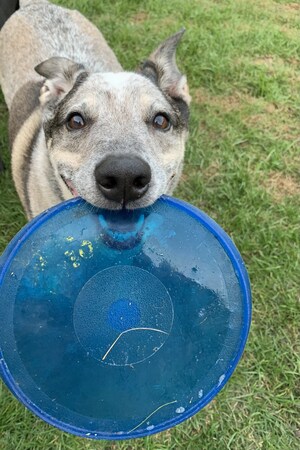MINNEAPOLIS, May 26, 2021 /PRNewswire/ --
Summary
Pet Poison Helpline, a recognized national leader in animal toxicology and pet health, has thoroughly reviewed both the scientific literature on Seresto flea and tick collars and our own animal poison control case data. As with any medication for you or your pet, it is important to compare the potential risks of a treatment with the proven benefits. In the medical opinion of our boarded veterinary toxicology experts these collars are a safe and important treatment for the vast majority of cats and dogs. The health protections these collars provide far outweigh the extremely rare risk of a serious adverse event. People who avoid using these products out of concern for a negative reaction may be putting their pets at greater risk of harm by leaving them susceptible to diseases caused by fleas and ticks such as Lyme disease, Ehrlichiosis, Anaplasmosis and Rocky Mountain Spotted Fever. These diseases pose a far greater health risk to a pet than Seresto collars. To help veterinary professionals and pet owners better understand the risks and benefits of Seresto, we have summarized our findings below.
Detailed Response
Several news agencies have recently reported concerns over the safety of Seresto collars. As an organization dedicated to pet health and safety and one of North America's leading authorities in veterinary toxicology, Pet Poison Helpline has extensive experience analyzing the safety of animal health products, including flea and tick preventatives. We are uniquely familiar with the safety profiles of such products both when used per labeled instructions and in situations involving accidental ingestion or unintended contact. Further, we have both created and examined safety data published about flea and tick products, including Seresto. To help veterinary professionals and pet owners understand the risks and benefits of Seresto, we would like to share our experiences with this product.
Pet Poison Helpline Case Data
Since 2013, Pet Poison Helpline has managed approximately 400 cases involving Seresto, the majority of which involved dogs ingesting all or a portion of the collar. Ingesting the product is far more dangerous to a pet than simply wearing one because the pesticides are not usually absorbed across the skin, but they can be directly absorbed from the gastrointestinal tract. Therefore, any case of collar ingestion is potentially concerning. Of our more than 400 cases, more than a third of exposed dogs/cats remained asymptomatic and, for those that did develop clinical signs, the majority were mild and self-limiting. Vomiting was the most common sign, experienced by approximately 50 percent of patients. This is unsurprising as vomiting may be caused by both pyrethroids (one of Seresto's active ingredients) and ingestion of foreign material (i.e., collar). Other signs included diarrhea and a decreased appetite in nearly 6 percent of patients. Lethargy was reported in approximately 13 percent of patients and often occurs concurrently with vomiting, diarrhea and anorexia. Ataxia was observed in about 3 percent of cases with panting and agitation noted in 1-2 percent. All other reported signs occurred in less than 1 percent of animals. The most notable finding in our data is the distinct lack of severe neurological signs such as tremors, severe ataxia, and seizures—signs that are consistent with pyrethroid poisoning. Despite entire collars being chewed and swallowed, there were no reports of death.
As the nation's leading animal toxicology experts, we consider ourselves the eyes and ears of the nation when it comes to pet safety. Typically, when products cause severe injury to pets, our center would quickly become aware as veterinary professionals would be calling us for treatment advice. The fact that nearly 40 percent of pets that ingested the collars remained asymptomatic, and when clinical signs occurred most were minor and self-limiting, provides strong evidence to support the safety profile of Seresto.
Explanation of Data Reported to EPA
Many of the news stories about the potential safety concerns with Seresto are based on one article issued by a non-medical news organization that tallied raw numbers of adverse event data previously submitted to the EPA by Seresto's manufacturer. It is important to understand that any time a pet owner or veterinary professional contacts a company to report an adverse effect involving an EPA (or FDA) regulated product, the company is legally required to report the allegation to regulators, regardless of whether that adverse event has been substantiated by a medical professional or was truly caused by the product. The good news is that this makes for an extremely sensitive post-market surveillance system. The challenge with such systems is that there are a lot of reported incidents that ultimately have nothing to do with the product. For example, if a pet owner placed a flea and tick collar on their dog and two days later, he stopped eating, started vomiting, and was straining to defecate, the pet owner might call the manufacturer to ask if the collar could be the cause of their dog's signs since this was the only change in their pet's environment. Although these signs would not be expected from wearing a flea/tick collar, the manufacturer must still document this information as an adverse event and report it to EPA. If a veterinarian later determined that the collar was not the cause of the dog's signs and instead diagnosed him with a bowel obstruction caused by eating part of a tennis ball, the collar manufacturer must still report the dog's illness to the EPA as an adverse event, even though the reaction had nothing to do with the collar.
Contextualizing Raw Adverse Event Data
Raw case counts can be challenging to interpret and when the absolute numbers are large, it is understandable that pet owners and their veterinarians can become concerned. To be placed in context, however, the raw numbers must be compared to the number of products sold. In the case of Seresto, more than 25 million collars have been sold in the US. When comparing this number to the total number of reported adverse events, it is evident that the incidence rate of reported adverse events is quite small (0.3 percent or 3 out of 1,000)1.
Next, it is important to examine the severity of the adverse events. If most involve minor problems such as hair breakage or skin irritation at the collar site, this may be in line with expected side effects from wearing a close-fitted collar. While those side effects may mean that the specific collar is not the best option for that particular pet, it does not mean that the product, in general, is unsafe or should not be used on other pets. In the case of Seresto, 90 percent of adverse events involved minor effects.1
It is also imperative to look closely at any case involving death or serious illness that occurred in a pet to better determine if the product contributed to those outcomes. The board-certified toxicology experts at Pet Poison Helpline are often contracted to perform independent safety reviews of consumer and animal health products. In 2016 we were asked by then Bayer Animal Health to perform an expert review of pet fatality reports associated with Seresto. After a thorough review of the scientific literature and research involving flumethrin and imidacloprid, the active ingredients in Seresto, along with a careful review of each individual case, we concluded that the vast majority of fatalities were highly unlikely to be caused by the use of Seresto. In fact, many had other well-documented and unrelated causes of death. For the few cases where a relationship between Seresto and the pet's death could not be ruled out, one cannot exclude the possibility of a rare idiosyncratic reaction.
Conclusion
We strongly agree that pet owners should be aware of potential side effects Seresto collars or any other types of products can cause in both animals and humans, but we think the recent media reports have misrepresented the true risk of harm and discounted or disregarded the benefits and valuable protections these collars provide to tens of millions of pets and their owners who can be infected. In its totality, we think the science continues to support the safe and effective use of Seresto collars to prevent flea and tick-borne illness in pets and their human families.
About Pet Poison Helpline
Pet Poison Helpline, an animal poison control center based in Minneapolis, is available 24 hours, seven days a week for pet owners and veterinary professionals who require assistance treating a potentially poisoned pet. The veterinarians and board-certified toxicologists provide treatment advice for poisoning cases of all species, including dogs, cats, birds, small mammals, large animals and exotic species. As the most cost-effective option for animal poison control care, Pet Poison Helpline's fee of $65 per incident includes follow-up consultations for the duration of the poison case. Pet Poison Helpline is available in North America by calling 800-213-6680. Additional information can be found online at www.petpoisonhelpline.com.
1 Cima G. Seresto collars come under greater scrutiny: Elanco defends product, experts remain comfortable with their use. Journal of the American Veterinary Medical Association. May 1, 2021, Vol. 258, No. 9, Pages 916-918.
Contact: Maja Ferrell
Pet Poison Helpline
(952) 852-4608
[email protected]
SOURCE Pet Poison Helpline

Related Links
WANT YOUR COMPANY'S NEWS FEATURED ON PRNEWSWIRE.COM?
Newsrooms &
Influencers
Digital Media
Outlets
Journalists
Opted In






Share this article